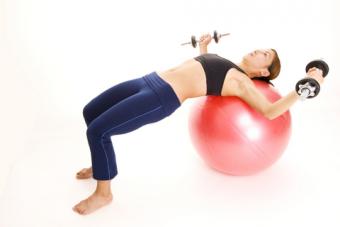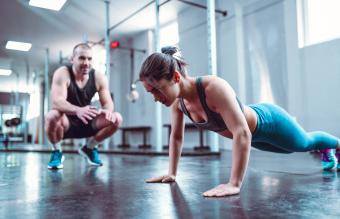
Chest fly workouts are probably one of the most popular exercises in the gym. This is understandable. Who can resist the defined cleavage and appearance of firmness that comes from performing them regularly? Fortunately, there are numerous variations of chest fly exercises. Practicing these variations can help you avoid burnout.
Anatomy of a Chest Fly
The pectorals are the primary muscles that are used when performing a chest fly. As such, it is one of the best exercises for sagging breasts. In contrast to the bench press, which is often considered a bulk-building exercise, the chest fly is considered a definition exercise.
While shoulders and biceps may assist the movements involved in a chest fly, it is important that these muscles do not overcompensate for the pectorals. For optimal results, special attention should be given to proper form.
How to Perform Chest Fly Workouts with Dumbbells
Using dumbbells is one of the most popular ways to perform a chest fly. Indeed, dumbbell use has its advantages. Since you are not using a machine that controls your alignment, dumbbell use requires you to rely on your core muscles for support. Additionally, unlike machines, which have a pre-defined range of motion, using dumbbells allows you to extend the parameters of the chest fly movement. However, this is not always a good thing. Extending the movement beyond the range of your shoulders can cause impingement, which may lead to serious injuries. For best results, follow these directions for performing chest fly workouts with dumbbells:
- Lie face up on a weight bench. If you have a tendency towards back problems, bend your knees and put your feet on the bench.
- Hold one weight with each hand. Elbows are slightly bent.
- Arms are open and aligned with your chest. Palms are facing upwards.
- Inhale to prepare.
- As you exhale, squeeze your pectoral muscles and bring the weights together.
- Inhale and slowly return to the starting position.
- Perform three sets of 8 to 12 repetitions.
- Use maximum control through all movements.
Always be sure to use the correct weight. For example, your elbows should remain slightly flexed throughout the entire exercise. If you find that you need to bend and straighten your elbows, you are using your biceps to help you. Switching to a lighter weight would be more effective.
How to Perform a Chest Fly on a Machine
Performing a chest fly on a machine provides more support than doing the same exercise with free weights. Most chest fly machines are height-adjustable. Adjust the seat according to the length of your torso. This is important because it ensures you are working the correct muscles. Remember, you want your arms to be at shoulder level. Some chest fly machines can even be adjusted for range of motion.
When performing the chest fly on a machine, make sure to keep the small of your back pressed into the pad, and your feet firmly on the floor. Do not allow the machine to jerk you back on the return movement.
How to Perform a Chest Fly with a Resistance Band
When you are going on vacation, there is no need to abandon your chest fly exercises. Simply bring along a resistance band. Resistance bands can also provide variety for your workouts. Instead of ending the movement with your hands together, you can criss-cross your arms to get a deeper workout for your inner chest muscles.
There are two ways to perform a chest fly with a resistance band. Some places sell special attachments, which allow you to connect the band to a door jamb. You can also lie on the band and adjust its length.
While performing chest fly workouts will provide wonderful chest definition, it's important to balance the muscle groups by also performing workouts for the back.







